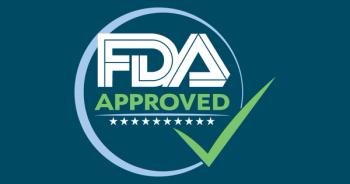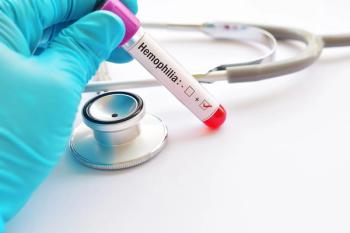Key takeaways:
- Zoliflodacin achieved a microbiological cure rate of 96.8% in the urogenital evaluable population.
- Baseline isolates with zoliflodacin MIC values ≤ 0.25 µg/mL correlated with consistently high treatment success.
- Findings reinforce zoliflodacin’s potential as a single-dose oral alternative to current injectable therapies.
New subgroup analyses from the global phase 3 zoliflodacin trial highlight the drug’s efficacy against multidrug-resistant Neisseria gonorrhoeae, including ciprofloxacin-resistant strains, across all infection sites and patient subgroups. The data were presented at IDWeek 2025 in Atlanta, Georgia.
Zoliflodacin (ZFD) is a first-in-class spiropyrimidinetrione gyrase inhibitor with a novel mechanism of action designed to overcome growing gonococcal resistance to existing therapies. In the pivotal phase 3 randomized controlled trial (NCT03959527), a single oral dose of ZFD demonstrated noninferiority to the current dual therapy standard—ceftriaxone plus azithromycin—for uncomplicated urogenital gonorrhea. Cure rates for pharyngeal and rectal infections were also comparable between treatment arms.1
According to ClinicalTrials.gov, the trial featured patients aged 12 years and older, who weighed at least 35 kg, with signs and symptoms consistent with2:
- Urethral or cervical gonorrhoea
- Urethral or cervical uncomplicated gonorrhoea as determined by either a positive culture, NAAT, Gram stain, or methylene blue test/gentian violet stain in the past 14 days prior to screening
- Unprotected sexual contact with an individual reported to be infected with NG in the past 14 days prior to screening (confirmation by a positive NAAT, Gram stain, or methylene blue test/ gentian violet stain or culture)
Zoliflodacin was granted Priority Review by the FDA on June 12, 2025, and was assigned a target action date of December 15, 2025.3
Consistent results across MIC levels and resistance profiles
The new subgroup findings examined microbiological cure rates by baseline ZFD minimum inhibitory concentration (MIC) and ciprofloxacin (CIP) susceptibility. Among evaluable participants, baseline isolates had ZFD MICs ranging from ≤ 0.008 to 0.5 µg/mL. High microbiological cure rates were achieved for isolates with ZFD MICs ≤ 0.25 µg/mL—the range covering nearly all samples in the study. There were too few isolates at 0.5 µg/mL (n = 3) to draw conclusions about response at that level.
Strong outcomes across sites of infection
Microbiological cure rates at urogenital sites of infection were 96.6% among participants infected with CIP-resistant N. gonorrhoeae and 97.4% among those with CIP-susceptible baseline N. gonorrhoeae. High rates of microbiological cure for CIP-resistant N. gonorrhoeae were maintained for pharyngeal and rectal sites of infection, geographical location, and sex at birth.
Key findings:
- Microbiological cure rates ≥ 91% across urogenital, rectal, and pharyngeal sites of infection for participants in the evaluable population.
- Microbiological cure consistent in both ciprofloxacin-resistant and -susceptible infections
- ZFD MICs ≤ 0.25 µg/mL associated with high response rates
- No difference in outcomes by geography or sex assigned at birth
These results support zoliflodacin’s potential as an effective single-dose oral therapy—an important advantage for improving access, adherence, and treatment completion compared with injectable regimens. Study authors also note zoliflodacin’s stable potency across years of surveillance, further supporting its long-term potential against resistant N. gonorrhoeae.
Sarah McLeod, PhD, senior director of Clinical Microbiology at Innoviva Specialty Therapeutics, discussed these findings and their clinical implications in a Q&A that follows.
Q&A with Sarah McLeod, PhD, on zoliflodacin data for uncomplicated gonorrhea
Contemporary Pediatrics:
The subgroup data showed high cure rates across infection sites and resistance profiles. What do these findings tell us about how zoliflodacin performs against resistant N. gonorrhoeae strains?
Sarah McLeod, PhD:
The rationale for evaluating zoliflodacin in this phase 3 study stems from the urgent global need for new antibiotics to treat gonorrhea, particularly in the face of rising antimicrobial resistance (AMR).
Neisseria gonorrhoeae has developed resistance to every class of antibiotics historically used to treat it, and treatment options are becoming increasingly limited.
The phase 3 subset analysis presented at IDWeek highlighted high microbiological cure rates with zoliflodacin across urogenital, rectal, and pharyngeal sites, including against ciprofloxacin-resistant Neisseria gonorrhoeae strains. Among participants with urogenital infections, cure rates were 96.6% for ciprofloxacin-resistant and 97.4% for ciprofloxacin-susceptible strains.
These results were consistent across infection sites and resistance profiles. Zoliflodacin is a first-in-class spiropyrimidinetrione antibiotic with a novel mechanism of action, distinct from currently available therapies. The data reinforce zoliflodacin’s potential as a single-dose oral treatment for uncomplicated gonorrhea, particularly in the face of rising resistance to current therapies.
Contemporary Pediatrics:
Zoliflodacin MIC values were consistent across patient groups. Why is that uniform activity important, and what could it mean for real-world use?
McLeod:
Zoliflodacin maintained in vitro activity across isolates from diverse patient groups, including women, men who have sex with men, and heterosexual men, regardless of baseline resistance to other antibiotics, reinforcing its potential as a single-dose oral treatment for uncomplicated gonorrhea.
The consistency of cure rates across demographics, including female participants, underscores zoliflodacin’s potential as a treatment option in the face of rising antibiotic resistance.
These findings have important real-world implications, especially for women. Gonorrhea can often be asymptomatic in women but still lead to serious complications like pelvic inflammatory disease, infertility, and adverse pregnancy outcomes.
Contemporary Pediatrics:
Surveillance data show zoliflodacin’s potency has remained stable over several years. How confident are you that this durability will hold once the drug is in broader clinical use?
McLeod:
Neisseria gonorrhoeae continues to evolve resistance to nearly every antibiotic used against it, especially in parts of Asia and Africa, and we are starting to see resistance in parts of the United States. This pathogen is one of the most urgent threats identified by global health authorities, including the CDC and WHO, because of its ability to rapidly develop and spread resistance.
Without new treatment options, we risk returning to an era where gonorrhea could become increasingly difficult to effectively treat, leading to severe reproductive health complications, adverse pregnancy outcomes, and increased HIV transmission.
What makes this Phase 3 trial particularly important is that it evaluates zoliflodacin, a novel, first-in-class antibiotic with a different mechanism of action from current therapies. The trial was also designed and conducted with a global perspective, including sites in the United States, Belgium, the Netherlands, Thailand, and South Africa. Many of these countries have high burdens of drug-resistant gonorrhea.
The data generated from the Phase 3 study highlight the clinical potential of zoliflodacin and provide valuable insights for both clinical practice and public health strategies aimed at controlling the spread of resistant strains.
In the foreseeable future, we anticipate significant advancements in pathogen-targeted and precision antimicrobial therapies. The traditional 1-size-fits-all approach is being replaced by more specific and effective therapies that support antimicrobial stewardship, preserve the microbiome, and potentially help slow down the development of resistance.
This innovation will be supported by rapid diagnostic tools that allow for earlier and more targeted treatments, as well as new therapeutic modalities. Additionally, the development of sustainable models that include public-private partnerships, targeted commercialization, and responsible financing frameworks will be crucial for bringing new antibiotics to the market.
Contemporary Pediatrics:
The phase 3 trial met non-inferiority to ceftriaxone plus azithromycin. From a clinical standpoint, what advantages does a single-dose oral therapy offer over the current injectable standard?
McLeod:
In the pivotal Phase 3 trial, a multinational, randomized, controlled, open-label, non-inferiority trial, zoliflodacin demonstrated non-inferiority to the current standard dual therapy of ceftriaxone plus azithromycin for the treatment of uncomplicated urogenital gonorrhea, with both regimens showing comparable safety profiles.
The not-for-profit organization Global Antibiotic Research & Development Partnership (GARDP) sponsored the study with support from Innoviva Specialty Therapeutics A total of 930 adolescent and adult participants were enrolled across 16 sites in 5 countries with high gonorrhea prevalence, making it the largest clinical trial to date for a new treatment targeting Neisseria gonorrhoeae.
Participants received either a single, 3g oral dose of zoliflodacin or the standard regimen of 500mg intramuscular ceftriaxone plus 1g oral azithromycin. Zoliflodacin met the prespecified criteria for non-inferiority, with a treatment difference of 5.31% (95% CI: 1.38%, 8.65%) for microbiological cure of urogenital infection. It was generally well-tolerated, with adverse events comparable across both treatment groups, and no serious adverse events were reported.
Having a new, single-dose oral treatment shown to be effective across all anatomical sites and resistant strains has the potential to simplify treatment and improve adherence, particularly in settings where follow-up may be difficult.
For OB/GYNs, this represents a promising step toward more accessible and effective care for women affected by gonorrhea.
Related video
cUTI Roundtable: Discussing and diagnosing these difficult infections











